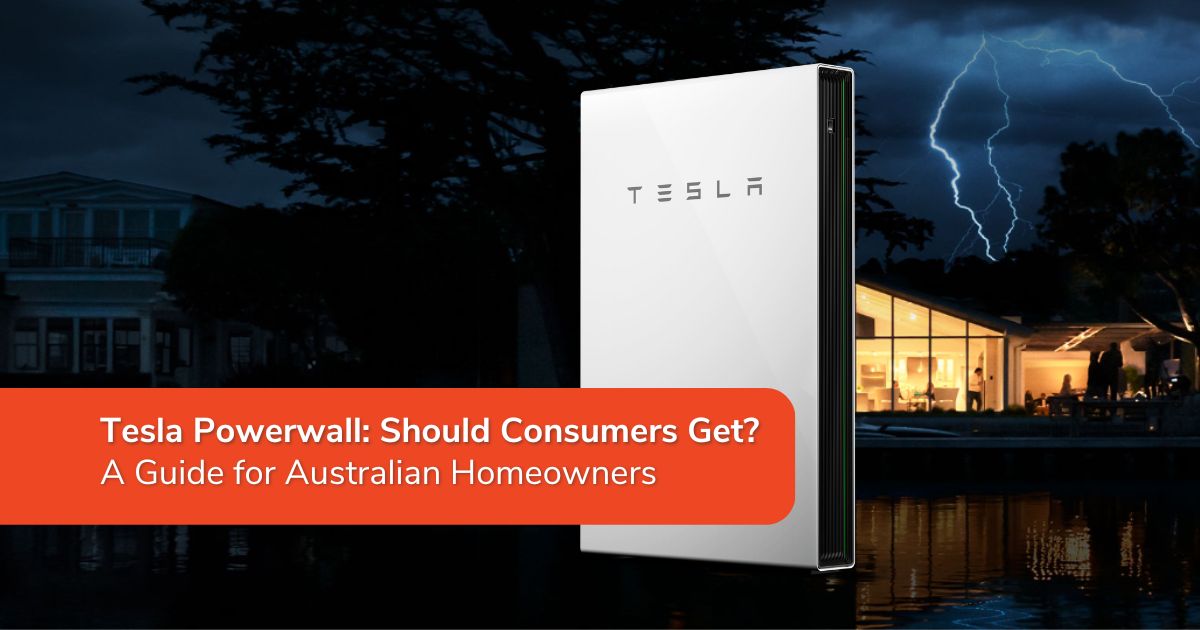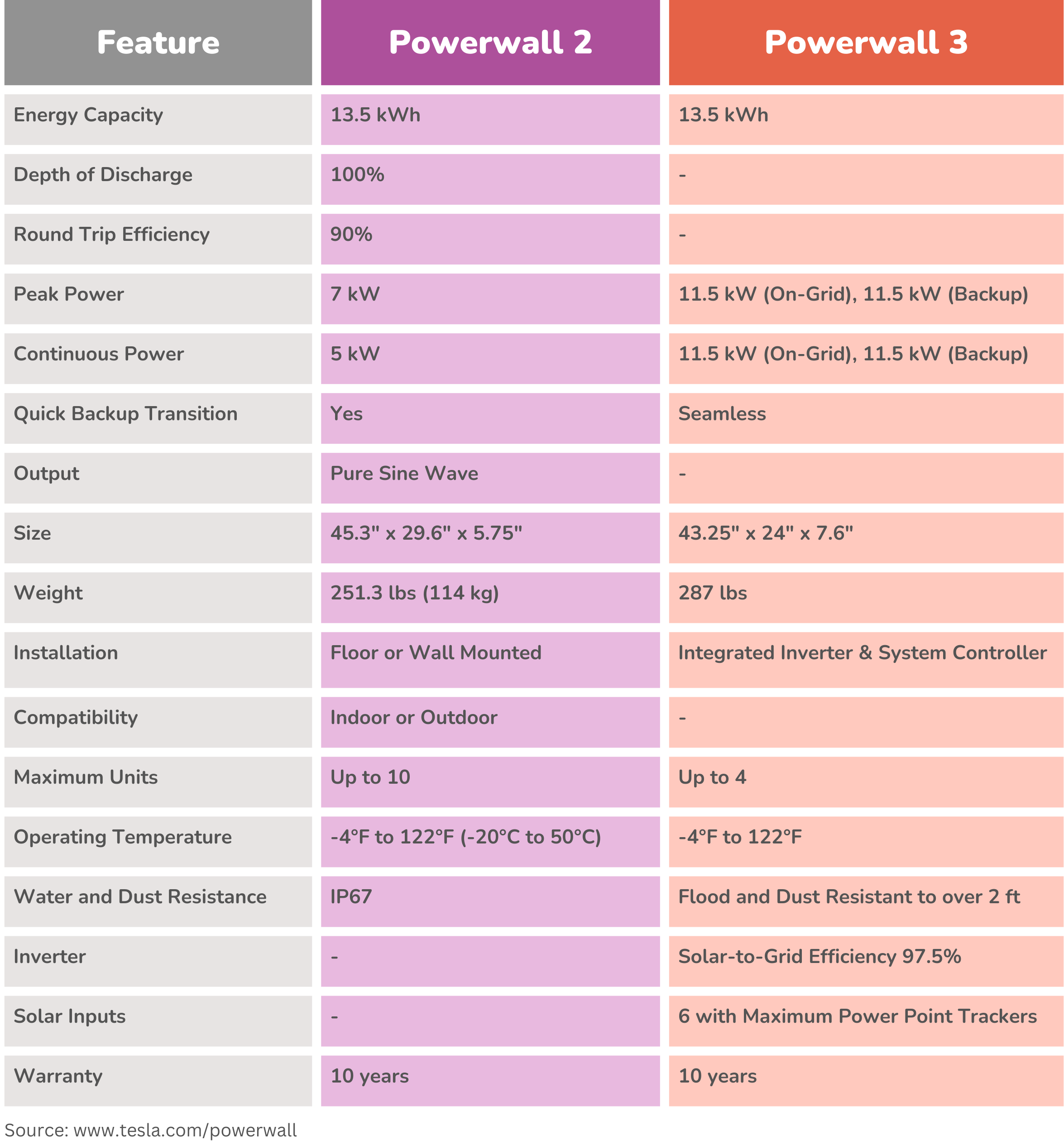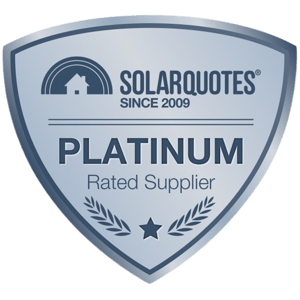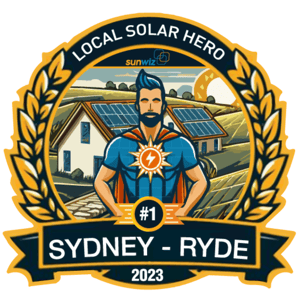Tesla Powerwall: Should Consumers Get? Guide for Australian Homeowners

As energy costs in Australia skyrocket, the country sees a significant increase in interest in Tesla solar batteries. Among the energy storage solutions in the market, Tesla Powerwall has emerged as a popular choice, offering residents and businesses a path toward a more sustainable and self-sufficient future.
Understanding the Powerwall
The Tesla Powerwall is a home battery storage system that allows you to store excess solar energy generated during the day for use later, like during peak evening hours or power outages. Compatible with solar panels and the grid, it serves as a reliable backup during blackouts and a means to maximize the self-consumption of solar energy. This not only helps you reduce reliance on the grid but also potentially lowers your electricity bills.
The Tesla Powerwall is a home battery storage system compatible with both solar and the grid. It allows you to store excess solar energy generated during the day for use later like during peak evening hours. It also serves as a reliable backup during blackouts and an efficient way to maximise self-consumption of your solar energy during day and night. Since Tesla Powerwall lessens your reliance on the grid, it can substantially reduce your electricity bills as well.
Key Features of the Powerwall
- Capacity: 13.5 kWh high-capacity with 100% depth of discharge and 90% roundtrip efficiency
- Power: 7 kW peak power and 5kW continuous power with quick backup transition
- Lifespan: Tesla offers a 10-year warranty on the Powerwall, guaranteeing at least 70% capacity retention after a decade.
- Smartphone App Control: The Tesla app allows you to monitor your energy usage, track battery charge levels, and control your Powerwall remotely.
Comparing Powerwall Generations
The transition from Powerwall 1 to Powerwall 2 marked significant advancements in home battery storage technology to cater to the evolving needs of consumers seeking sustainable energy solutions. Powerwall 2 stands out with notable improvements such as a higher capacity of 13.5kWh as compared to the original version’s 7kWh.
The Future of Powerwall: Tesla Powerwall 3
Looking ahead, anticipation for the release of the Tesla Powerwall 3 price in Australia is remarkable and is expected around December 2024.
This latest version maintains the 13.5 kWh capacity of its predecessor but introduces several innovative features. Notably, Powerwall 3 boasts a maximum continuous power output of 11.5 kW for both on-grid and backup operations, ensuring reliable performance in various scenarios. Additionally, it introduces flood resistance up to 2 feet. As for scalability, Powerwall 3 can connect up to four units in contrast to Powerwall 2's scalability of up to ten units.
But here is the most important innovation: while Powerwall 2 is the ideal solution for any add-on battery installation to existing solar homes, Powerwall 3 will have an integrated DC solar inverter, instead of an AC-Coupled inverter like the Powerwall 2 version. This makes it a perfect solution for new solar and battery installations, eliminating the redundancy of an additional DC solar inverter and increasing efficiency in energy conversion.
As Tesla continues to push the boundaries of renewable energy technology, Powerwall 3 represents a promising step forward in empowering homeowners with sustainable, reliable, and cost-effective energy solutions.
At this stage the price for Powerwall 3 is not confirmed, however, there are rumours about its launch price at around $16,000 fully installed.

Powerwall 2 Pricing in Australia
In recent years, Tesla has made significant reductions in the Tesla Powerwall 2 price making it more accessible to Australian homeowners and businesses. Currently, the installed cost of a Powerwall 2, including the battery, inverter, and installation, can range from $13,000 to $15,000. However, it's crucial to remember that this is an estimate, and the actual Tesla Powerwall 2 price in Australia in 2023 can vary based on factors like installation complexity and location.
Furthermore, Smart Energy Answers offers an exclusive $750 rebate and an additional $750 rebate for Sydney Metro installations before 30th March. Additionally, several government rebates and incentives are available to make Powerwall ownership even more attractive. These incentives vary across states and territories, so it's recommended to research the specific programs applicable to your region
Powerwall Performance in Australia
The adoption rate of Powerwall in Australia is steadily increasing, driven by its potential to reduce reliance on the grid, manage energy bills, and contribute to a more sustainable future. Recent case studies show that Tesla Powerwall can effectively help homeowners and businesses lower reliance on the grid and in turn, reduce their energy bills as well. With Tesla Smart monitoring apps, users can also maximise their solar energy usage by optimising their time of use.
Tesla Powerwall Alternatives
While Tesla Powerwall is undeniably a popular choice for home battery storage, there are other battery solutions available in the Australian market such as Alpha and SolarEdge. It’s good to know that there are options, each with its own features and capabilities. Therefore, it’s important to Assess your energy needs, research and select the battery solution that fits your specific requirements.
Conclusion
While the initial cost of a Powerwall system might seem high, the potential long-term benefits in terms of energy savings, grid independence, and environmental impact are undeniable. With the recent price decrease and various solar battery rebates, the Tesla Powerwall presents an increasingly attractive option for Australian homeowners looking to take control of their energy future. However, it's crucial to carefully consider your specific needs and conduct thorough research before making an investment. Consulting with a qualified solar installer can provide personalized guidance and ensure the Powerwall is the right fit for your home.
Learn more about
Tesla Powerwall for your home.
%20(1).png?width=265&height=96&name=www.smartenergyanswers.com.auhs-fshubfsSmart%20Energy%20Answers%20Logo%20(HIRES)%20(1).png)

.png?width=514&height=121&name=Tesla%20Powerwall%203%20(new).png)







